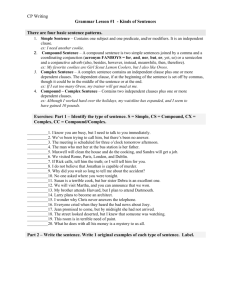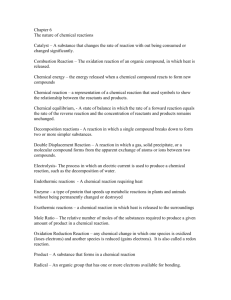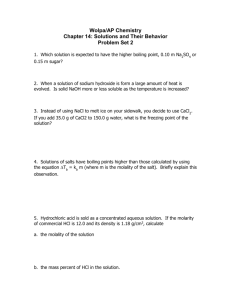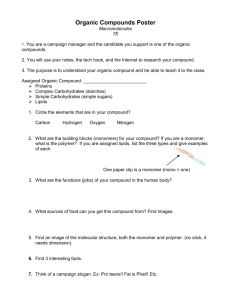Compound Interest - Daytona State College
advertisement
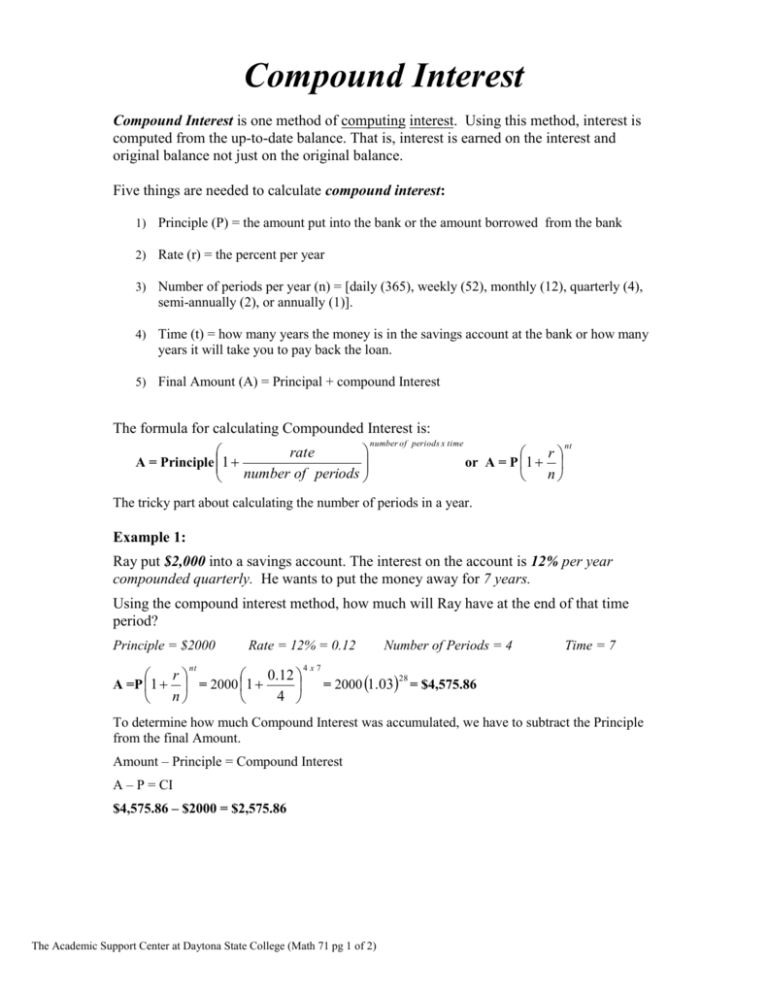
Compound Interest Compound Interest is one method of computing interest. Using this method, interest is computed from the up-to-date balance. That is, interest is earned on the interest and original balance not just on the original balance. Five things are needed to calculate compound interest: 1) Principle (P) = the amount put into the bank or the amount borrowed from the bank 2) Rate (r) = the percent per year 3) Number of periods per year (n) = [daily (365), weekly (52), monthly (12), quarterly (4), semi-annually (2), or annually (1)]. 4) Time (t) = how many years the money is in the savings account at the bank or how many years it will take you to pay back the loan. 5) Final Amount (A) = Principal + compound Interest The formula for calculating Compounded Interest is: rate A = Principle 1 number of periods number of periods x time r or A = P 1 n nt The tricky part about calculating the number of periods in a year. Example 1: Ray put $2,000 into a savings account. The interest on the account is 12% per year compounded quarterly. He wants to put the money away for 7 years. Using the compound interest method, how much will Ray have at the end of that time period? Principle = $2000 A =P 1 Rate = 12% = 0.12 nt r 0.12 = 2000 1 n 4 4x7 Number of Periods = 4 Time = 7 = 2000 1.03 = $4,575.86 28 To determine how much Compound Interest was accumulated, we have to subtract the Principle from the final Amount. Amount – Principle = Compound Interest A – P = CI $4,575.86 – $2000 = $2,575.86 The Academic Support Center at Daytona State College (Math 71 pg 1 of 2) Compound Interest (continued) Example 2: An individual has $1000.00 to invest for 3 years at rate of 5% annual compound interest. How much is the investment worth at the end of 3 years? Principle = $1000 A =P 1 Rate = 5% = 0.05 nt r 0.05 = 1000 1 1 n 1x3 Number of Periods = 1 Time = 3 = 1000 1.05 = $1,157.63 3 To determine how much Compound Interest was accumulated, we have to subtract the Principle from the final Amount. Amount – Principle = Compound Interest A – P = CI $1,157.63 – $1000 = $157.63 Example 3: To buy a computer, Tom borrowed $3000 at 6% compound interest calculated quarterly. Calculate: a. The total amount to be paid back. b. The amount of compound interest paid over the 4 years. a. Using compound interest method: Principle = $3000 A =P 1 Rate = 6% = 0.06 nt r 0.06 = 3000 1 n 4 4x4 Number of Periods = 4 Time = 4 = 3000 1.015 = $3,806.96 16 b. To determine how much Compound Interest was accumulated, we have to subtract the Principle from the final Amount. Amount – Principle = Compound Interest A – P = CI $3,806.96 – $3000 = $806.96 The Academic Support Center at Daytona State College (Math 71 pg 2 of 2)





